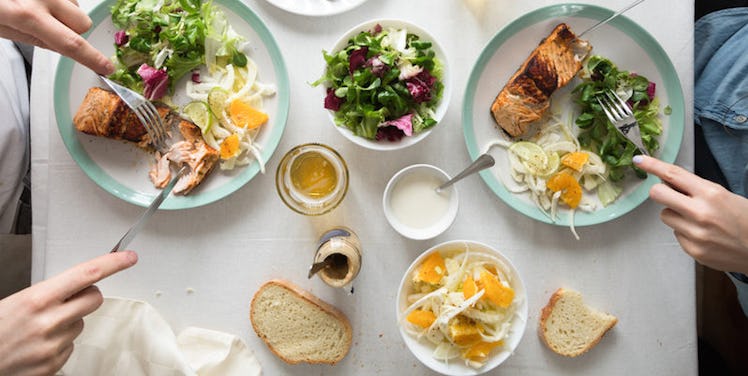
3 Ways You Can Eat Carbs And Still Lose Weight With A Healthy Diet
If you've been struggling to lose stubborn body fat, chances are you've heard all about how eating a low carb diet can help you shed unwanted pounds.
But before you ditch all the carbs in your daily diet for a life of being perpetually “hangry," it's important to know carbs can play a very beneficial role in helping you successfully lose weight.
Before I jump into how to use carbs effectively in your diet for better weight-loss results, here are a few reasons you would even want to keep carbs while dieting:
Carbs taste good.
Bread, pasta, quinoa, butternut squash; they're all really tasty! Too many diets focus on bland, unsatisfying foods.
By keeping carbs in your diet, you give yourself more food options and a higher likelihood of enjoying your diet long enough to stick to it and see results.
Carbs have fiber.
Fiber is great for your digestion, for making you feel full so you don't overeat and for controlling your blood sugar. Both starchy and non-starchy carbs contain good health-promoting fiber.
Carbs can give your mood a boost.
That hangry feeling you get when you're low-carbing is both from unintentionally dieting on too few calories and from missing out on the serotonin-boosting effects of eating foods high in tryptophan, an amino acid that is closely linked with feelings of decreased irritability and anxiety, at the same meal with starchy carbs.
Including carbs in your diet can help stabilize your mood while you're dieting and help the process seem a little less dreadful.
Carbs are protein-sparing. Paired with a good resistance and cardiovascular training program, a well-structured diet that includes some carbs helps your body use the protein you eat for building new, metabolically-active lean muscle tissue instead of using it for energy.
This increases the likelihood you will build new muscle tissue while you are losing fat, changing the overall composition of your body and making your diet and training results last longer!
Those are just a FEW of the many reasons your fat-loss diet should strategically use carbs to fuel your workouts and support muscle growth.
Simply cutting out carbs for weeks or months at a time can actually stall your fat loss by signaling your hormones to slow your metabolism and store fat in your body instead of using it for fuel.
You can still get the benefits of going low carb, however, AND strategically include carbs in your diet. Here are just three popular ways to do just that.
1) Carb Cycle
Carb cycling is a useful eating strategy because it can give you the best of both worlds: low-carb days where you coax your body to use fat for fuel and high-carb days where you reset your body's hormones that control appetite and metabolism to keep you burning fat during lower carb days.
And there are so many options to choose from in setting up your carb cycle that you can really experiment to find what works best for you. A classic carb cycle pattern includes repeatedly alternating low, medium and high carb days in that order or during a weekly seven-day cycle, then starting again from the beginning.
Paired with a good resistance and aerobic training program that features adequate rest days, carb cycling can help you take advantage of higher intensity workouts on training days when you reserve low- or no-carb days for days of decreased or no physical activity.
2) Refeeds
If keeping track of the days in your carb cycle sound too confusing, you can use a refeed protocol instead. With this option, you'll eat the same level of low carbs for several days, then have one meal (or more, depending on your caloric intake during the rest of the week), where you eat lots of carbs.
What this does is reset your leptin levels, the hormone that controls appetite and signals hunger and therefore increases or decreases your metabolic rate, to keep your body burning fat instead of plateauing with diminishing results.
How often you refeed will really depend on your body and the results you are getting from your diet, but a weekly refeed is the most common frequency for a high carb refeed meal.
3) Nutrient Timing
Finally, if going days without carbs still doesn't appeal to you, you can focus instead on strategically timing your carbs at certain intervals in your daily food intake.
Your body will make the most use out of the carbs you do eat during your very first meal of the day and after a high intensity resistance training or metabolic conditioning workout when stored energy levels are low and can be replenished with glucose from carbs.
With all of these options for including carbs in your daily food intake, dieting to reach your fat-loss goals doesn't have to be based on perpetual deprivation or martyrdom.
By focusing on optimizing the role of carbs in your fat-loss diet, you'll lose fat and build muscle while still enjoying some of your favorite foods in ways that strategically further your fitness goals!